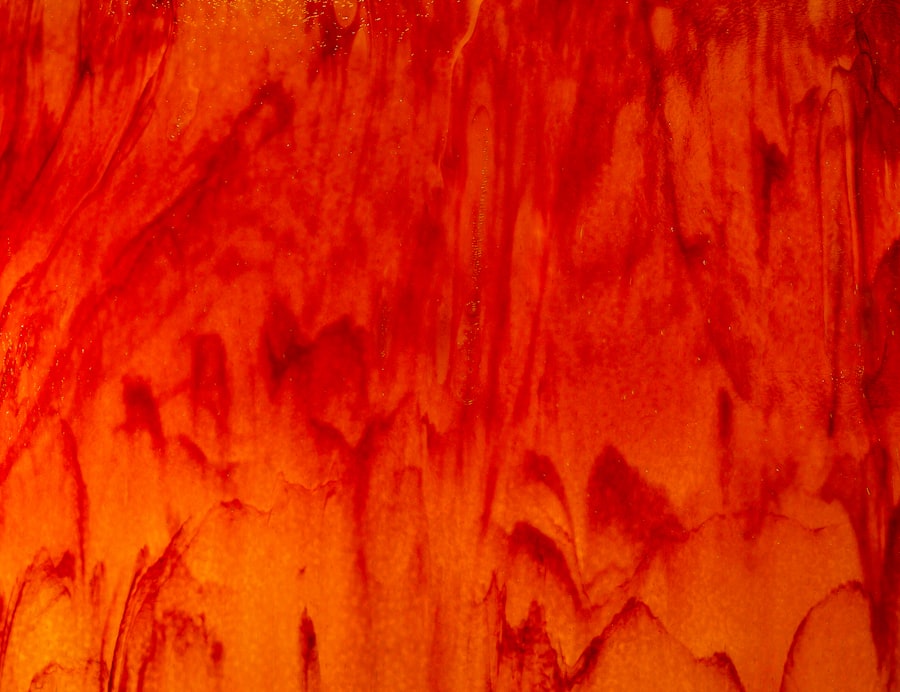As you prepare for the post-laser hair removal phase, it’s essential to understand that your skin will require special attention. The laser treatment you underwent has targeted hair follicles, and your skin may be sensitive as it begins to heal. To ensure a smooth recovery, you should gather the necessary supplies and information.
This includes soothing creams, ice packs, and any prescribed medications from your practitioner. Familiarizing yourself with the aftercare instructions provided by your technician is crucial, as these guidelines will help you navigate the initial days following your treatment. In addition to gathering supplies, you should also mentally prepare for the changes your skin may experience.
It’s common for the treated area to appear red or swollen immediately after the procedure. Understanding that these reactions are normal can help alleviate any anxiety you might feel. You may want to keep a journal to track your skin’s response over the next few weeks, noting any changes or concerns that arise.
This proactive approach will not only help you stay informed but also assist in communicating effectively with your healthcare provider during follow-up appointments.
Key Takeaways
- Preparing for Post-Laser Hair Removal:
- Shave the treatment area before the appointment
- Avoid sun exposure and tanning beds
- Discontinue use of any hair removal methods that pull hair from the root
- Immediate Aftercare:
- Apply aloe vera or a gentle moisturizer to soothe the skin
- Avoid hot showers and baths for 24 hours
- Use a gentle cleanser and avoid harsh chemicals on the treated area
- Managing Discomfort:
- Use cold compresses to reduce swelling and discomfort
- Take over-the-counter pain medication if necessary
- Avoid tight clothing that may irritate the treated area
- Long-Term Care:
- Use sunscreen with SPF 30 or higher on the treated area
- Avoid picking or scratching the skin
- Follow the recommended post-treatment skincare routine
- Potential Side Effects:
- Temporary redness and swelling are common
- Some people may experience temporary pigment changes
- In rare cases, blistering or scarring may occur
- Sun Exposure and Protection:
- Avoid sun exposure for at least 2 weeks post-treatment
- Use a broad-spectrum sunscreen with UVA and UVB protection
- Wear protective clothing and seek shade when outdoors
- Follow-Up Appointments:
- Schedule follow-up appointments as recommended by your provider
- Discuss any concerns or side effects with your provider
- Follow all post-treatment instructions provided by your provider
- Maintenance and Touch-Ups:
- Follow the recommended maintenance schedule for touch-up treatments
- Be consistent with your skincare routine to maintain results
- Communicate with your provider about any changes in hair growth or skin condition
Immediate Aftercare
Immediately after your laser hair removal session, your skin will likely feel warm and may exhibit some redness. This is a natural response to the treatment, and it’s important to give your skin the care it needs during this time. Applying a cool compress can help soothe any discomfort and reduce swelling.
You should avoid using hot water on the treated area for at least 24 hours, as this can exacerbate irritation. Instead, opt for lukewarm water when cleansing your skin, and be gentle to avoid further aggravation. In the days following your treatment, keeping the area clean and moisturized is vital.
Use a mild, fragrance-free cleanser to wash the area, and apply a soothing lotion or gel that contains aloe vera or hyaluronic acid. These ingredients can help calm inflammation and promote healing. Additionally, refrain from using any harsh exfoliants or active ingredients like retinoids or acids for at least a week post-treatment.
Your skin is in a delicate state, and giving it time to recover will yield better results in the long run.
Managing Discomfort
While discomfort is often minimal after laser hair removal, you may still experience some sensitivity in the treated area. If you find that you are feeling more discomfort than expected, over-the-counter pain relievers such as ibuprofen or acetaminophen can be effective in managing any pain. Always follow the recommended dosage on the packaging and consult with your healthcare provider if you have any concerns about taking medication.
In addition to medication, consider incorporating natural remedies into your routine to alleviate discomfort. Applying cold packs intermittently can provide relief from swelling and heat sensations. You might also find that wearing loose-fitting clothing over the treated area helps minimize irritation caused by friction.
Pay attention to how your body responds and adjust your care routine accordingly; everyone’s experience is unique, and what works for one person may not work for another.
Long-Term Care
| Metrics | Data |
|---|---|
| Number of long-term care facilities | 10,000 |
| Long-term care beds | 1,000,000 |
| Long-term care residents | 2,000,000 |
| Long-term care staff | 500,000 |
Once the initial healing phase has passed, it’s time to focus on long-term care for your skin post-laser hair removal. Maintaining healthy skin is essential not only for aesthetic reasons but also for overall skin health. Regularly moisturizing the treated area will help keep your skin hydrated and supple.
Look for products that are free from fragrances and harsh chemicals to avoid any potential irritation. Incorporating a gentle exfoliation routine into your skincare regimen can also be beneficial in the long run. After a few weeks, once your skin has fully healed, consider using a mild exfoliant once or twice a week to promote cell turnover and prevent ingrown hairs.
However, be cautious not to over-exfoliate, as this can lead to irritation or damage. Always listen to your skin and adjust your routine based on its needs.
Potential Side Effects
While laser hair removal is generally considered safe, it’s important to be aware of potential side effects that may arise during the healing process. Common side effects include redness, swelling, and minor discomfort in the treated area. These symptoms typically subside within a few hours to a few days.
However, in some cases, you may experience more significant reactions such as blistering or changes in pigmentation. If you notice any unusual symptoms or if side effects persist longer than expected, it’s crucial to reach out to your healthcare provider for guidance. Another potential side effect is the risk of ingrown hairs, which can occur as hair follicles begin to shed after treatment.
To minimize this risk, ensure that you are following proper aftercare instructions and maintaining a consistent skincare routine. If ingrown hairs do develop, resist the urge to pick at them; instead, use gentle exfoliation techniques and consider consulting with a dermatologist if they become problematic.
Sun Exposure and Protection

Avoiding Direct Sunlight
Your skin will be more sensitive following laser hair removal treatment, making it more susceptible to sunburn and pigmentation changes. It’s advisable to avoid direct sunlight on the treated area for at least two weeks after your session.
Protective Measures
If you must be outdoors, wearing protective clothing or seeking shade can help shield your skin from harmful UV rays. In addition to avoiding sun exposure, applying a broad-spectrum sunscreen with an SPF of 30 or higher is essential when you do go outside.
Reapplying Sunscreen
Make sure to reapply sunscreen every two hours, especially if you are sweating or swimming. This protective measure will not only help prevent sunburn but also reduce the risk of hyperpigmentation or other long-term skin issues that can arise from UV exposure.
Follow-Up Appointments
Scheduling follow-up appointments with your laser hair removal technician is an important step in ensuring optimal results from your treatment. These appointments allow your provider to assess how well your skin has healed and whether additional sessions are necessary for achieving your desired outcome. During these visits, don’t hesitate to discuss any concerns or questions you may have about your recovery process.
They might suggest adjustments to your skincare routine or offer insights into what you can expect in terms of hair regrowth patterns. Staying engaged with your provider throughout this process will help you feel more confident in your post-treatment care and ensure that you are on track for successful results.
Maintenance and Touch-Ups
After completing your initial series of laser hair removal sessions, maintenance becomes key to achieving long-lasting results. While many individuals experience significant hair reduction after their treatments, some may require occasional touch-up sessions to address any remaining hair growth. These touch-ups are typically less frequent than the initial treatments but are essential for maintaining smooth skin over time.
To determine the best maintenance schedule for you, consult with your laser technician during follow-up appointments. They can assess your progress and recommend how often you should return for touch-ups based on factors such as hair growth patterns and skin response. By staying proactive about maintenance, you can enjoy the benefits of laser hair removal for years to come while keeping your skin healthy and radiant.
If you’re curious about the latest trends in home fashion, you may want to check out this article on inlaserhairremoval.com. In addition to learning about laser hair removal, you can also explore tips and tricks for updating your living space. And if you’re looking for more beauty and wellness advice, be sure to visit their blog at inlaserhairremoval.com.
FAQs
What is laser hair removal?
Laser hair removal is a cosmetic procedure that uses a concentrated beam of light (laser) to remove unwanted hair. The laser targets the pigment in the hair follicles, damaging them and inhibiting future hair growth.
What can I expect after my laser hair removal session?
After your laser hair removal session, you may experience some redness and swelling in the treated area. This is normal and should subside within a few hours to a few days. You may also notice that the treated hair becomes darker and begins to shed over the next 1-3 weeks.
How many sessions will I need for optimal results?
The number of sessions needed for optimal results varies depending on the individual and the area being treated. Most people require 6-8 sessions spaced 4-6 weeks apart to achieve the best results.
What should I avoid after my laser hair removal session?
After your laser hair removal session, it is important to avoid sun exposure and tanning beds, as well as hot showers, saunas, and strenuous exercise for 24-48 hours. You should also avoid plucking, waxing, or electrolysis in between sessions, as these methods can interfere with the hair removal process.
Are there any potential side effects of laser hair removal?
Some potential side effects of laser hair removal include temporary redness, swelling, and discomfort in the treated area. In rare cases, blistering, scarring, or changes in skin pigmentation may occur. It is important to discuss any concerns with your provider before undergoing treatment.







